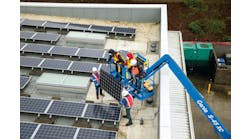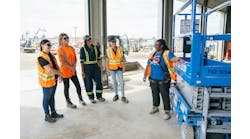Westwood, Mass.-based LoJack Corporation announced last week the results of its eighth annual Construction Equipment Theft Study. According to the study, which analyzed LoJack stolen vehicle recovery reports for 2008, construction theft continued at a steady pace with organized crime driving theft and loaders being the number one theft target. LoJack recovered more than $15.5 million in stolen construction equipment in 2008. Since entering the construction market in 2000, the company has recovered more than $100 million in LoJack-equipped stolen construction assets — plus the value of other stolen non-LoJack equipped construction equipment police recovered in chop shops and theft rings.
“In today’s down economy, construction equipment owners need to take extra precautions to protect their valuable equipment from opportunistic professional thieves who see this as a high reward, low risk form of theft,” said Ronald V. Waters, LoJack’s president and chief executive officer. “Unfortunately, the real cost of stolen equipment is far more than the value of the item stolen, since business owners typically pay the hefty price tag of business downtime, increases in insurance premiums and contract penalties. Stolen vehicle recovery systems — such as the one offered by LoJack — provide business owners with the protection they need to safeguard their equipment and their business from financial losses due to theft.”
This year’s study once again showed the ongoing role organized crime plays in the problem of construction equipment theft, with law enforcement discovering nine theft rings and chop shops through tracking and recovering stolen equipment with the LoJack System. Through these discoveries, police recovered more than $2 million in additional stolen assets that were not LoJack-equipped.
In one theft ring bust, the LoJack System helped the Miami-area police find a major construction theft ring and recover more than 30 pieces of construction equipment/commercial vehicles — including welders, compressors, generators, weed whackers and hedge trimmers — valued at approximately $1.5 million.
Overall, LoJack has enabled law enforcement to discover more than 70 theft rings and chop shops since entering the construction market.
The study also revealed that newer equipment on the jobsite is the most common theft target because of higher resale value. The types of equipment most frequently stolen are (in order):
- Backhoe Loaders/Skip Loaders/Wheel Loaders/Track Loaders
- Light Utility/Work Trucks and Trailers
- Generators/Air Compressors/Welders
- Skid Steers
- Forklifts/Scissor Lifts
These equipment types represented more than 75percent of all construction equipment recoveries documented by LoJack in 2008. A full 66 percent of the equipment stolen and recovered was five years old or less and a full 72 percent was recovered in 24 hours or less after being reported to the police.
Based on LoJack’s recovery data, the following are the top states with the highest occurrence of equipment theft: California, Florida, Texas, Nevada, Arizona, Georgia, New Jersey, New York, Illinois and Maryland.
The report also indicated that construction theft is a local issue. In 97 percent of the cases, the stolen equipment was recovered in the same state in which the theft was reported. It was either in a storage facility or in use at another local jobsite. Unlike auto theft, which has a higher incidence in major cities around the country, construction theft is not confined to city streets and urban areas. Rather, it often occurs in suburban areas where construction activity has been high.
The 2008 LoJack Construction Equipment Theft Report is based on state theft statistics and equipment recoveries documented by LoJack in 26states from January to December 2008. LoJack has been tracking theft/recovery data for the past eight years and will continue to issue these reports annually to provide the industry with valuable statistics and trend information.





